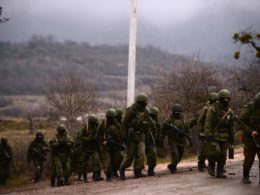Ukraine is not winning, but neither is Russia

The war's evolution created a tactical trap for Ukraine
This war has an unusual setting reminiscent of mid-to-late 20th-century warfare, with the Iran-Iraq war of the 1980s being the last similar example. About 90% of battlefield activities are concentrated in the tactical depth - from zero to 30 kilometers into each side's territory. The key difference now is UAVs, FPV drones, and electronic warfare, which largely replace traditional artillery and MLRS but operate in the same area. This leaves the operational depths – hundreds of kilometers behind the frontline – completely free for Russia to set up and recover their forces. While these rear areas were once disrupted by HIMARS, those quantities were limited. Now they're only targeted by precious long-range drones used on high-value targets. Such a war, where all action happens in the tactical zone, cannot continue indefinitely. Ukraine's largest issue is its extreme exhaustion of personnel, and that setting must be changed. Russia is at an advantage right now, as deaths do not matter for them. But Ukraine can win with fewer people if it can penetrate strategic depths. This is why Ukraine insists on the West allowing long-range strikes into Russian territory.Ukraine's victory plan is realistic but needs resources
The operational component of Zelenskyy’s victory plan is classified, but some things can be deduced. Ukraine did not have this plan for a long time, and the fact that it has it now is a big plus. The plan must change the paradigm of the war into more result-oriented operations aimed at liberating territory. Is it possible? Absolutely. Must it be done? Absolutely. The strategy of just holding ground is very weak and won't get us anywhere. Ukraine’s success is possible, technically and organizationally. But Ukraine critically depends on the west for funding and the provision of critical weapons systems. Ukraine has already proven its capabilities with three successful liberation operations - Kharkiv (2022), Kherson (2022), and Kursk (2024). Each was different because both sides keep adapting. Surprise remains possible, as shown by the recent Kursk incursion, though it can't be guaranteed in every case. To win, Russia’s operations need to start failing and Ukraine’s need to start succeeding. Unlike World War II-style sweeping offensives, victory will most likely come through a chain of serious operations. If they start to succeed, Putin will realize he's losing the war. The question of where it stops becomes secondary -- it's more important to change the course of war.Three keys to winning operations
Ukraine needs to enable full-scale combined arms campaigns with necessary capabilities. As of late 2024, some long-range weapons and aerial capabilities owned by our partners are competitive, but their future availability remains uncertain. The key changes needed are:- Long-range strike capability: No NATO general would claim military success is possible without striking enemy territory. With Russia launching everything from their territory, it's impossible to win without striking Russian territory.
- Air power: Russia uses about 900 gliding bombs per week. Planning without considering air power is unrealistic – no NATO command would plan a modern war without first gaining air superiority or at least air parity.
- New technologies: Including unmanned platforms, electronic warfare systems, AI systems (particularly in autonomous systems and optical recognition). These improve literally every day.
There is no single magic weapon
You don't get some weapon and then win the war. You get a combination of weapons that enable certain types of operations, and then you win the operations. A chain of victories may eventually lead to a political outcome that can be called victory. Looking at the war's evolution: In early 2022, Ukraine succeeded in liberating half its occupied territory using mainly Soviet legacy weapons. By late 2022, those were largely depleted, and Ukraine began transitioning to NATO systems. In 2023, we were still using about 50% Soviet-standard weapons, but now the vast majority are NATO equipment - a historic transition. By the end of 2022, Ukraine had already used quite a few drones, and new operational approaches were evolving. The Russians caught up after initially lagging. It was a fantastic chance for Ukraine to move further, but we didn't for various reasons. 2023 was very different from 2022, and 2024 is very different from 2023. Looking ahead to 2025-2027, we’re at decisive moments for certain systems. Key questions include:- Will electronic warfare systems be able to block FPV drone operations? If so, we’ll see one type of warfare focused on electronic warfare.
- If FPV operations can still penetrate electronic warfare defenses and we maintain real-time battlefield visibility, it will be an FPV-dominated war – whoever has better FPV capability will win.
- Will FPV capabilities extend beyond 30 kilometers to hundreds of kilometers?
- What about AI? We’re seeing interesting developments, with immense amounts of data being collected and analyzed in both Ukraine and Russia. This data processing will enable serious computer vision capabilities.
- If these capabilities enable completely autonomous weapons, as many suggest, we’ll see a robotic war that will make current operations totally irrelevant.





